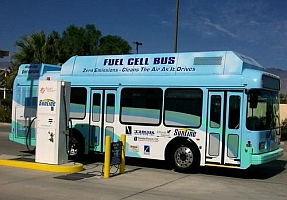Researchers at Delft University of Technology (TU Delft) in the Netherlands found that adding small crystals to solid electrolyte material can raise the efficiency of fuel cells. The TU Delft team published its findings, the second recent article on this subject, in the journal Advanced Functional Materials (paid subscription required).
Fuel cells are devices that combine hydrogen and oxygen to produce electricity, with water and heat as by-products. The conversion of hydrogen and oxygen to energy takes place through an electrochemical process, not combustion, which results in cleaner and more efficient power than from internal combustion engines.
The TU Delft researchers studied electrolyte materials, the material between two electrodes, in a fuel cell or a battery. The better the electrolyte, the better or more efficiently the fuel cell or battery works. Electrolytes are usually liquids, but liquids must be tightly sealed and take up a large amount of space.
Electrolytes as solids, however, as explained by Ph.D. student Lucas Haverkate, also have drawbacks, beginning with the lower conductivity of the material. “In a solid matter you have a network of ions, in which virtually every position in the network is taken. This makes it difficult for the charged particles — protons — to move from one electrode to another,” says Haverkate. “What you need to do is to create free spaces in the network.”
One way of creating this free space, and thus increasing conductivity in solid electrolytes, is to add titanium dioxide (TiO2) crystals of 7 to 50 nanometers in size; 1 nanometer equals 1 billionth of a meter. TiO2 nanocrystals attract protons, which creates more space in the network.
The nanocrystals are then mixed in the electrolyte with cesium hydrogen sulfate (CsHSO4), a solid acid, that attracts protons to the crystals. Haverkate says adding the crystals appears to cause an enormous leap in the conductive capacity of the electrolyte, by a factor of 100.
Haverkate and fellow doctoral candidate Wing Kee Chan published an article in the same journal in December 2010, taking a different approach to improving the conductivity of electrolytes. Chan measured the conductivity of electrolyte material sending neutrons through the material to deduce its properties, such as the density of protons in the crystals. The TU Delft team plans to test other materials as well to find a suitable solid-material electrolyte.
Read more: University Licenses Carbon Nanotube Technology for Fuel Cells
* * *


 RSS - Posts
RSS - Posts
You must be logged in to post a comment.